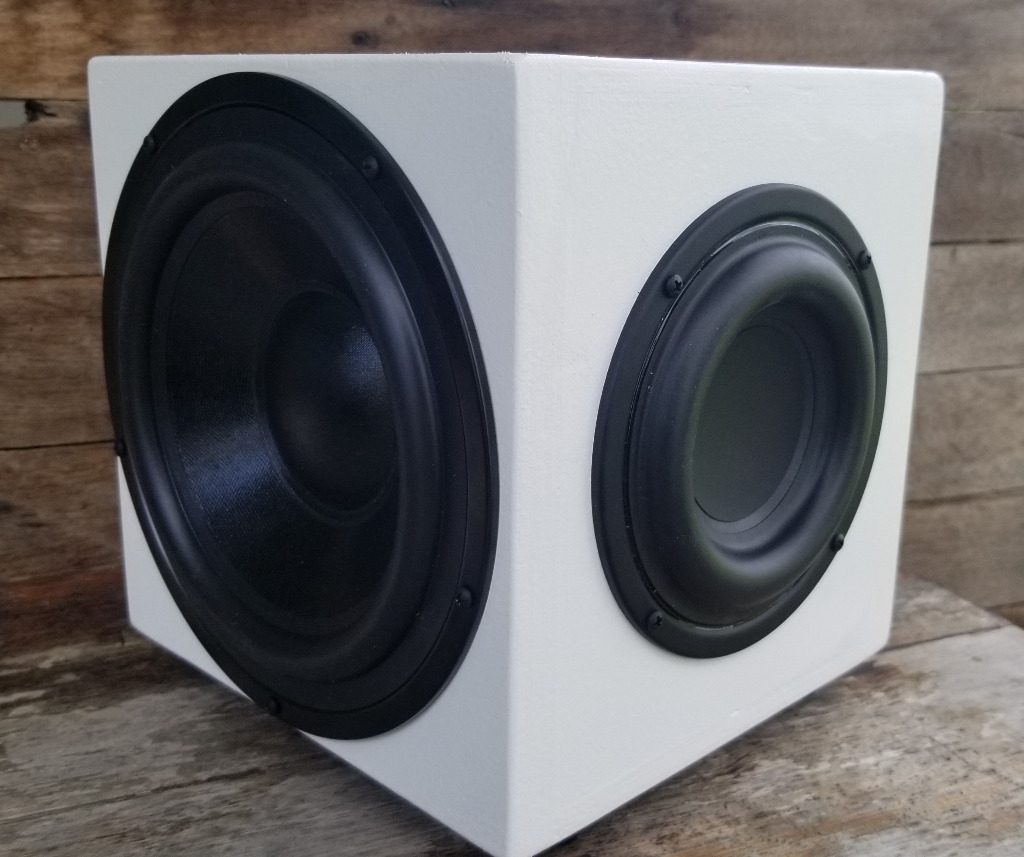
Micro Subwoofer Tang Band W5
Designer:
Ryan C
Project Category:
Subwoofers
Project Level:
Intermediate
Project Time:
1-8 Hours
Project Cost:
Under $100
Project Description:
Passive subwoofer utilizing a Tang Band W5 subwoofer and 8″ Dayton passive radiator.
Design Goals:
Utilize Tang Band W5 for a micro subwoofer to accompany a 2.1 setup.
Driver Selection:
264-917
Enclosure Design:
Enclosure is 0.26 cubic feet (8.5″ x 9″ x 9″) constructed of a mixture of 1/2″ and 3/4″ plywood. Added 1/2″ acoustic foam to the side along with poly fill.
Enclosure Assembly:
Glue only construction
Crossover Design:
N/A
Tips & Tricks:
Cut all common dimensions at the same time on the table saw to ensure consistency.
Get lots of clamps.
Add acoustic insulation before you put the last panel on.
Conclusion:
I am very pleased with outcome. The Tang Band driver is an excellent low frequency driver but can be challenging to use in a traditional vented enclosure because the optimal cabinet is so small and the tuning frequency low. I think I need to add the included passive radiator weight though because the tuning frequency seems to be a little too high.
About the Designer:
I am a music lover, musician, and amateur woodworker, so this is the best hobby for me. I still have my Infinity SM62 speakers I purchased when I was about 13 years old.
Project Parts List:
|
Part # |
Description |
Qty |
|
264-917 |
Tang Band W5-1138SMF 5-1/4″ Paper Cone Subwoofer Speaker |
1 |
|
295-492 |
Dayton Audio DS215-PR 8″ Designer Series Passive Radiator |
1 |
|
091-1154 |
Parts Express Dual-Ended Gold Binding Post Speaker Terminal Pair |
1 |
|
260-520 |
Sonic Barrier 1/2″ Acoustic Sound Damping Foam with PSA 18″ x 24″ |
1 |

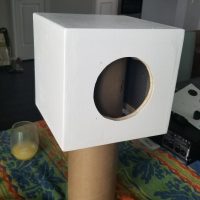
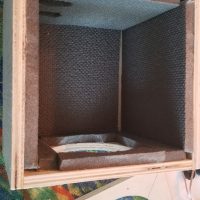
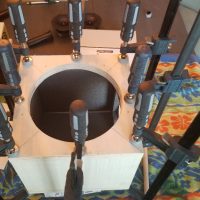
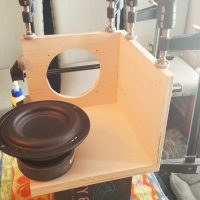
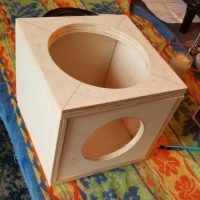
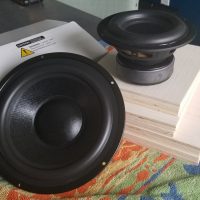
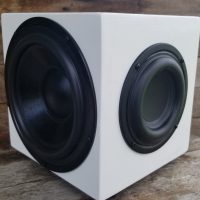
What is the actual tuning frequency achieved here? Cool looking little project right there.
Regarding the weight, there is a handy formula for figuring out how much weight you need. Do the math as if you were making a ported enclosure and the port diameter is the same as your passive radiator’s effective diameter to get the port length (it will be very long) at your desired tuning frequency. Now multiply the calculated port length by the SD value of the passive radiator to get the volume. Now multiply by the mass of the air that would occupy that space (1.2041 kg/m³ or 0.074887 lb/ft³ at sea level but you can adjust for your elevation if you live at high altitude). The mass of the passive radiator plus the weight should equal the air mass value you calculated. You can buy weights online from scientific suppliers by searching for “brass slotted weights” and get exactly what you need.
Hi. I did something very similar, the only diference was that I use the Tang Band 6,5in sub and I added 160gr of weighr in the PR, it sounds great, very low